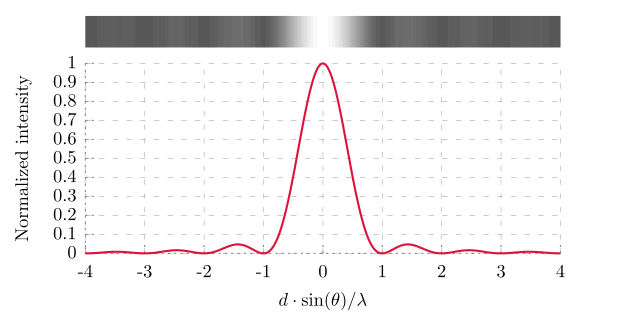The reason that most beginner's text-books don't give the exact locations of the secondary maxima, is simply because they are much harder to calculate. You need a lot more math to find them.
You start by calculating the intensity profile of single-slit diffraction. I skip the lengthy derivation here, because you can find it in any advanced text-book about wave optics. The final result is Fraunhofer's diffraction equation (see Diffraction - Single-slit diffraction):
$$I(\theta) = I_0 \left(\frac {\sin\left(\frac{d\pi}{\lambda}\sin\theta\right)} {\frac{d\pi}{\lambda}\sin\theta} \right)^2 \tag{1}$$ where $d$ is the slit width, $\lambda$ is the wavelength, and $\theta$ is the observed angle.

(image from Diffraction - single-slit diffraction)
By defining $x=\frac{d\pi}{\lambda}\sin\theta$, we can write (1) in a simpler way as $$I(\theta)=I_0\left(\frac{\sin x}{x}\right)^2 \tag{2}$$
Now it is straight-forward to find the $x$ values of the maxima and minima:
- The primary maximum is at $x=0$.
- The minima are at $x=\pm\pi, \pm 2\pi, \pm 3\pi, \pm 4\pi, ...$
- The secondary maxima are harder to find. Actually there is no analytical formula, and they can only be found by numerical methods. According to The unnormalized sinc function (Table 1) they are at $x=\pm 1.429\ \pi, \pm 2.462\ \pi, \pm 3.470\ \pi, ...$
Transforming from $x$ back to the original variables ($d,\lambda,\theta$) we have:
- The primary maximum is at $\theta=0$.
- The minima are at $\sin\theta=\pm\frac\lambda d, \pm 2\frac\lambda d, \pm 3\frac \lambda d, \pm 4\frac\lambda d, ...$
- The secondary maxima are at $\sin\theta=\pm 1.429\frac\lambda d, \pm 2.462\frac\lambda d, \pm 3.470\frac\lambda d, ...$
Now you can see: The secondary maxima are indeed approximately (but not exactly) half-way between the minima.
